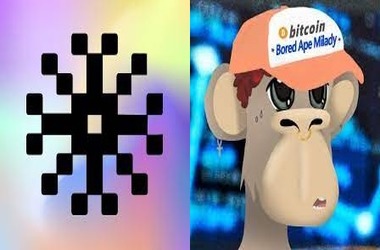
Both ERC and BRC acronyms include “RC,” which stands for Request for Comment. To clarify, the act of executing a task by calling a function within a smart contract. When dealing with tokens, the transfer process is commonly referred to as a token transfer and involves providing the token’s address and balance. The BRC-721E bridge token converts ERC-721 NFTs into Ordinals by initiating a burn address on Ethereum. This process mandates users to transfer their ERC-721 NFT to an unrecoverable wallet along with the ETH gas fee. The BRC-721E enables the Ordinal inscription on the Bitcoin network, which is a unique and unalterable on-chain inscription request.
As unfulfilled requests can be a possibility, an alternative option is available for users to have an inscription made on their behalf, thereby avoiding the need to pay sats (100 millionths of 1 BTC) as a fee on their end. Upon the conclusion of the bridging process, the NFT is rendered visible on Bitcoin’s NFT marketplace, ordinals.market, inclusive of all metadata that is currently available. The Ordinal protocol has sparked significant controversy since its establishment in January. Is it advisable for the Bitcoin network to offer supplementary features beyond its role as a stable currency? In the event that a novel service experiences a surge in popularity, is it possible for network congestion to occur?
As anticipated, the Bitcoin network experienced congestion, leading to a fourfold increase in transaction fees. Certain proponents of Bitcoin maximalism have gone so far as to describe this phenomenon as a form of denial of service (DoS) attack, given that it is now feasible to inundate the network with costly transactions. There were suggestions from certain core developers to eliminate the code responsible for enabling Ordinals. Nonetheless, what transpired was merely a glimpse of the potential future of Bitcoin in the event of its global adoption. In the event that millions of users were added to the Bitcoin network without any Ordinals in sight, transaction fees would experience a significant surge. It is likely that we will increasingly depend on layer 2 scalability solutions as a consequence.
Similar to how Ethereum relies on Optimism, Arbitrum, and Polygon, Bitcoin leverages the Lightning Network to address concerns surrounding network congestion.
As a consequence of the decline in Ordinals traffic, over 500,000 transactions remained unconfirmed by mid-May. However, BTC transaction fees have since reverted to their typical rate of around $2. In May’s conclusion, Bitcoin miners experienced a highly profitable period. As a result of the significant backlog of pending transactions in the mempool, miners may opt to raise fees and implement fresh priority classifications.
The increase in Bitcoin transaction fees resulted in a percentage of 14.3 of total miner revenue as of May 29. According to the Block’s Data Dashboard, this represents the peak level observed since April 2021. However, the trading volume of NFTs experienced a significant decline akin to a plummeting stone between the months of January and May in the year 2022. It seems that OpenSea (blue), which had a market share of more than 70% in the NFT market, is now facing competition from the new player Blur (orange). Apart from the intrinsically conjectural character of NFTs, the superior AI image creation is potentially exerting pressure on the notion of embedding one-of-a-kind artworks into the blockchain. Had AI applications been widespread during that period, it is improbable that Beeple would have been able to sell their artwork for $69 million.
The demand for Bitcoin ordinals is also decreasing. To date, the Bitcoin network has facilitated more than 10.2 million transactions, resulting in a total of $44.2 million in fees collected. Compared to the initial half of May, there was an 85 percent decline in weekly subscriptions.